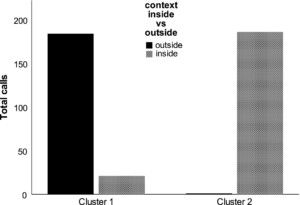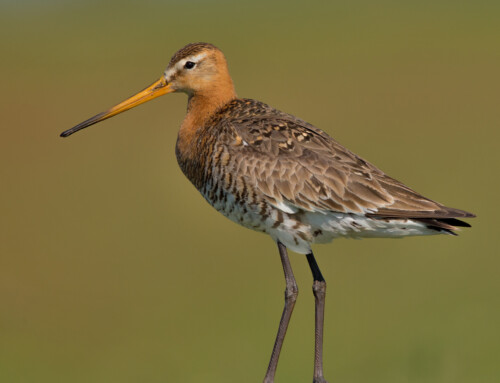LINKED PAPER
Kea Nestor notabilis mothers produce nest‐specific calls with low amplitude and high entropy. Wein, A., Schwing, R. & Huber, L. 2020. IBIS. DOI: 10.1111/ibi.12753 VIEW
Clear communication between parents and offspring is vital for the survival of nestlings. And the information has to flow efficiently in both directions. Young birds produce begging calls to catch the attention of their parents to receive enough food, while the parents produce distinct sounds to encourage their nestlings to eat. These calls might come at a cost though, because predators can hone in on the sounds and locate the nest (Haff & Magrath 2011). Hence, there are strong selective pressures on the structure of these parent-offspring communication calls (Morton 1975). A recent study focused on the Kea (Nestor notabilis), a parrot species endemic to New Zealand, to understand how selection has shaped its vocal repertoire.
Captive Kea
Previous research indicated that the Kea has seven distinct call types – two quiet calls and five loud ones – that are used in different settings (Schwing et al. 2012). For example, the screech call (“kee-ah”) is used for long-distance communication, whereas the warble is associated with playful behavior. To investigate which call types are used in parent-offspring communication, the researchers placed audio recorders inside and outside the nests of three captive Kea: Hope, Plume and Coco. The recordings revealed that half of the calls could be classified into the known call types. The other half of the calls, however, were previously unknown. Interestingly, the newly discovered calls were mostly uttered inside the nests.

Figure 1 The Kae calls could be divided into two main clusters of which one contained calls mostly produced outside the nest (black) and the other calls produced inside the nest (grey).
Predators
The most common outside call was the trill (40.1% of all calls), which is known to be the alarm call in wild Kea. This suggests that females use these loud calls to attract the attention of predators away from the nest and possibly induce defensive behavior in the nestlings (Platzen & Magrath 2004). Inside the nest – which is located at the end of a long, narrow entrance – the birds produced calls with lower amplitude (i.e. less loud) and higher entropy (i.e. less structure). These characteristics result in a call that quickly disappears in the acoustic environment and is difficult to locate, preventing nearby predators from finding the nest (Redondo & De Reyna 1998). The exact functions of these soft nesting calls remain to be investigated, but video footage indicates that they are related to feeding and learning nestlings the vocal repertoire.
References
Haff, T.M. & Magrath, R.D. (2011). Calling at a cost: elevated nestling calling attracts predators to active nests. Biology Letters 7: 493– 495. VIEW
Morton, E.S. (1975). Ecological sources of selection on avian sounds. The American Naturalist 109: 17-34. VIEW
Platzen, D. & Magrath, R.D. (2004). Parental alarm calls suppress nestling vocalization. Proceedings of the Royal Society B 271: 1271-1276. VIEW
Redondo, T. & De Reyna, L.A. (1988). Locatability of begging calls in nestling altricial birds. Animal Behaviour 36: 653-661. VIEW
Schwing, R., Parsons, S. & Nelson, X.J. (2012). Vocal repertoire of the New Zealand Kea Parrot Nestor notabilis. Current Zoology 58: 727-740. VIEW
Image credits
Featured image: Kea Nestor notabilis | Christian Mehlführerl CC BY-SA 2.5 Wikimedia Commons




